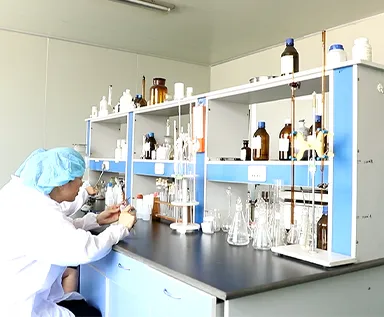
-
 Afrikaans
Afrikaans -
 Albanian
Albanian -
 Amharic
Amharic -
 Arabic
Arabic -
 Armenian
Armenian -
 Azerbaijani
Azerbaijani -
 Basque
Basque -
 Belarusian
Belarusian -
 Bengali
Bengali -
 Bosnian
Bosnian -
 Bulgarian
Bulgarian -
 Catalan
Catalan -
 Cebuano
Cebuano -
 Corsican
Corsican -
 Croatian
Croatian -
 Czech
Czech -
 Danish
Danish -
 Dutch
Dutch -
 English
English -
 Esperanto
Esperanto -
 Estonian
Estonian -
 Finnish
Finnish -
 French
French -
 Frisian
Frisian -
 Galician
Galician -
 Georgian
Georgian -
 German
German -
 Greek
Greek -
 Gujarati
Gujarati -
 Haitian Creole
Haitian Creole -
 hausa
hausa -
 hawaiian
hawaiian -
 Hebrew
Hebrew -
 Hindi
Hindi -
 Miao
Miao -
 Hungarian
Hungarian -
 Icelandic
Icelandic -
 igbo
igbo -
 Indonesian
Indonesian -
 irish
irish -
 Italian
Italian -
 Japanese
Japanese -
 Javanese
Javanese -
 Kannada
Kannada -
 kazakh
kazakh -
 Khmer
Khmer -
 Rwandese
Rwandese -
 Korean
Korean -
 Kurdish
Kurdish -
 Kyrgyz
Kyrgyz -
 Lao
Lao -
 Latin
Latin -
 Latvian
Latvian -
 Lithuanian
Lithuanian -
 Luxembourgish
Luxembourgish -
 Macedonian
Macedonian -
 Malgashi
Malgashi -
 Malay
Malay -
 Malayalam
Malayalam -
 Maltese
Maltese -
 Maori
Maori -
 Marathi
Marathi -
 Mongolian
Mongolian -
 Myanmar
Myanmar -
 Nepali
Nepali -
 Norwegian
Norwegian -
 Norwegian
Norwegian -
 Occitan
Occitan -
 Pashto
Pashto -
 Persian
Persian -
 Polish
Polish -
 Portuguese
Portuguese -
 Punjabi
Punjabi -
 Romanian
Romanian -
 Russian
Russian -
 Samoan
Samoan -
 Scottish Gaelic
Scottish Gaelic -
 Serbian
Serbian -
 Sesotho
Sesotho -
 Shona
Shona -
 Sindhi
Sindhi -
 Sinhala
Sinhala -
 Slovak
Slovak -
 Slovenian
Slovenian -
 Somali
Somali -
 Spanish
Spanish -
 Sundanese
Sundanese -
 Swahili
Swahili -
 Swedish
Swedish -
 Tagalog
Tagalog -
 Tajik
Tajik -
 Tamil
Tamil -
 Tatar
Tatar -
 Telugu
Telugu -
 Thai
Thai -
 Turkish
Turkish -
 Turkmen
Turkmen -
 Ukrainian
Ukrainian -
 Urdu
Urdu -
 Uighur
Uighur -
 Uzbek
Uzbek -
 Vietnamese
Vietnamese -
 Welsh
Welsh -
 Bantu
Bantu -
 Yiddish
Yiddish -
 Yoruba
Yoruba -
 Zulu
Zulu
Essential Materials for Effective Chemistry Laboratory Practices and Experiments
The Importance of Laboratory Materials in Chemistry
Chemistry is often described as the central science, bridging the gap between physics, biology, and environmental sciences. At the heart of this discipline are chemistry laboratories, where theoretical knowledge is transformed into practical applications. One of the fundamental elements that underpin the workings of a chemistry lab is the materials used during experiments. These materials, which can range from basic chemicals to sophisticated apparatus, are critical for ensuring accurate results and maintaining safety in the laboratory environment.
Basic Chemicals
At the core of every chemistry experiment are the chemicals that scientists manipulate. These substances can be classified into various categories, including reactants, solvents, and catalysts. Reactants are the starting materials that undergo chemical reactions, while solvents are used to dissolve other substances, allowing for diverse experimentation. Catalysts, on the other hand, are substances that increase the rate of a chemical reaction without being consumed in the process. The selection of high-quality chemicals is paramount, as impurities can lead to erroneous results, misinterpretations, and ultimately flawed conclusions.
Glassware and Equipment
Chemistry labs are also characterized by their extensive use of glassware and laboratory equipment. Common items include beakers, flasks, test tubes, and pipettes, each serving specific purposes during experimentation. For example, beakers are ideal for mixing and heating substances, while flasks are better suited for reactions that require swirling or shaking. The proper use of glassware is crucial in ensuring both the integrity of the reaction and the safety of the laboratory personnel. Additionally, more complex apparatus such as spectrophotometers, chromatographs, and centrifuges play essential roles in analyzing and separating chemical compounds, enabling deeper insights into the nature of matter.
chemistry laboratory materials

Safety Equipment
Safety is a primary concern in any chemistry laboratory, given the potentially hazardous nature of many chemicals. As such, safety equipment, including gloves, goggles, lab coats, and fume hoods, is indispensable. Protective gear shields laboratory workers from spills, splashes, and toxic fumes, thereby minimizing the risk of accidents and injuries. Moreover, the presence of properly maintained safety devices such as eyewash stations and fire extinguishers is vital for ensuring a safe working environment. Training on the proper use of safety equipment and emergency protocols is equally important and should be a fundamental part of laboratory education.
Waste Disposal Materials
Another crucial aspect of laboratory work that is often overlooked is the disposal of chemical waste. The responsible management of waste materials is essential not only for compliance with environmental regulations but also for maintaining a safe laboratory environment. Various disposal methods, such as neutralization or incineration, should be employed according to the type of waste generated. Laboratories should be equipped with designated containers for hazardous waste and educators must instill a culture of responsibility regarding waste disposal among students and researchers.
Conclusion
In conclusion, laboratory materials are the backbone of any chemistry laboratory. From basic chemicals to sophisticated equipment, the quality and appropriateness of these materials directly influence the outcomes of experiments and the safety of laboratory personnel. A well-designed chemistry lab, equipped with the right materials and safety protocols, fosters an environment where scientists can explore, innovate, and contribute to the advancement of knowledge. As advancements in science continue to evolve, so too will the materials used in laboratories, ensuring that chemistry remains at the forefront of scientific discovery. Emphasizing the importance of high-quality materials and rigorous safety practices is crucial for the success and integrity of laboratory work in chemistry.
-
PTFE Centrifuge Tubes - Chemical Resistant, Leak-proof, Ideal for Laboratory UseNewsJul.05,2025
-
Premium Metal Dropper Bottle for Precise Dispensing 250ml & 1ml Options AvailableNewsJul.04,2025
-
20 ml Headspace Vials - High Quality Polyethylene & Plastic Vials for Lab UseNewsJul.04,2025
-
Small Bottle with Pipette - Precise Dispensing 100ml Pipette Bottles for Essential Oils & Lab UseNewsJun.24,2025
-
Acetic Anhydride Bottle for Accurate Dropper Measurement in Pharmacy Use High-Quality Dropper BottlesNewsJun.10,2025
-
Innovative PET Bottle Design for Juice – Unique Shapes & Customization OptionsNewsJun.10,2025






















